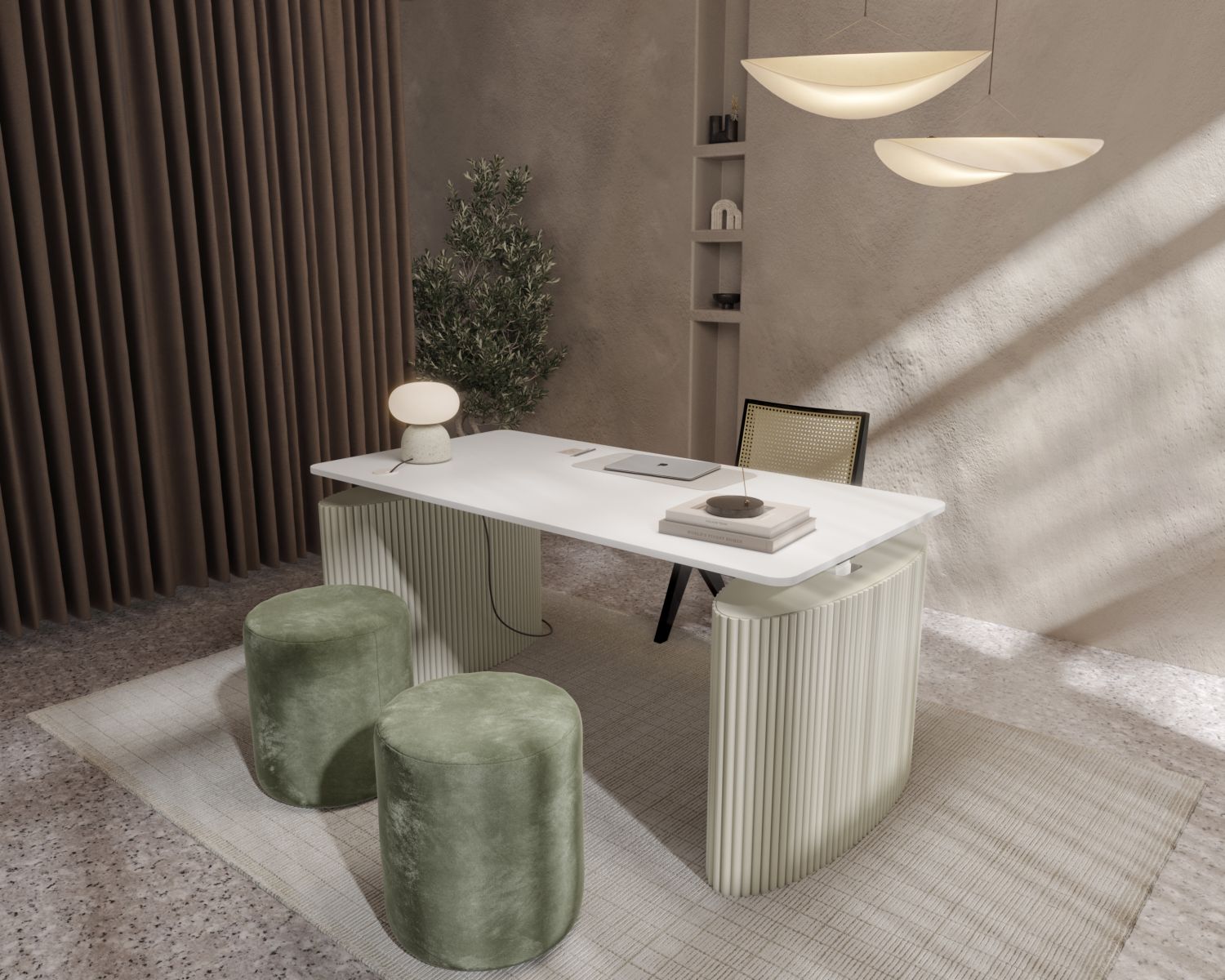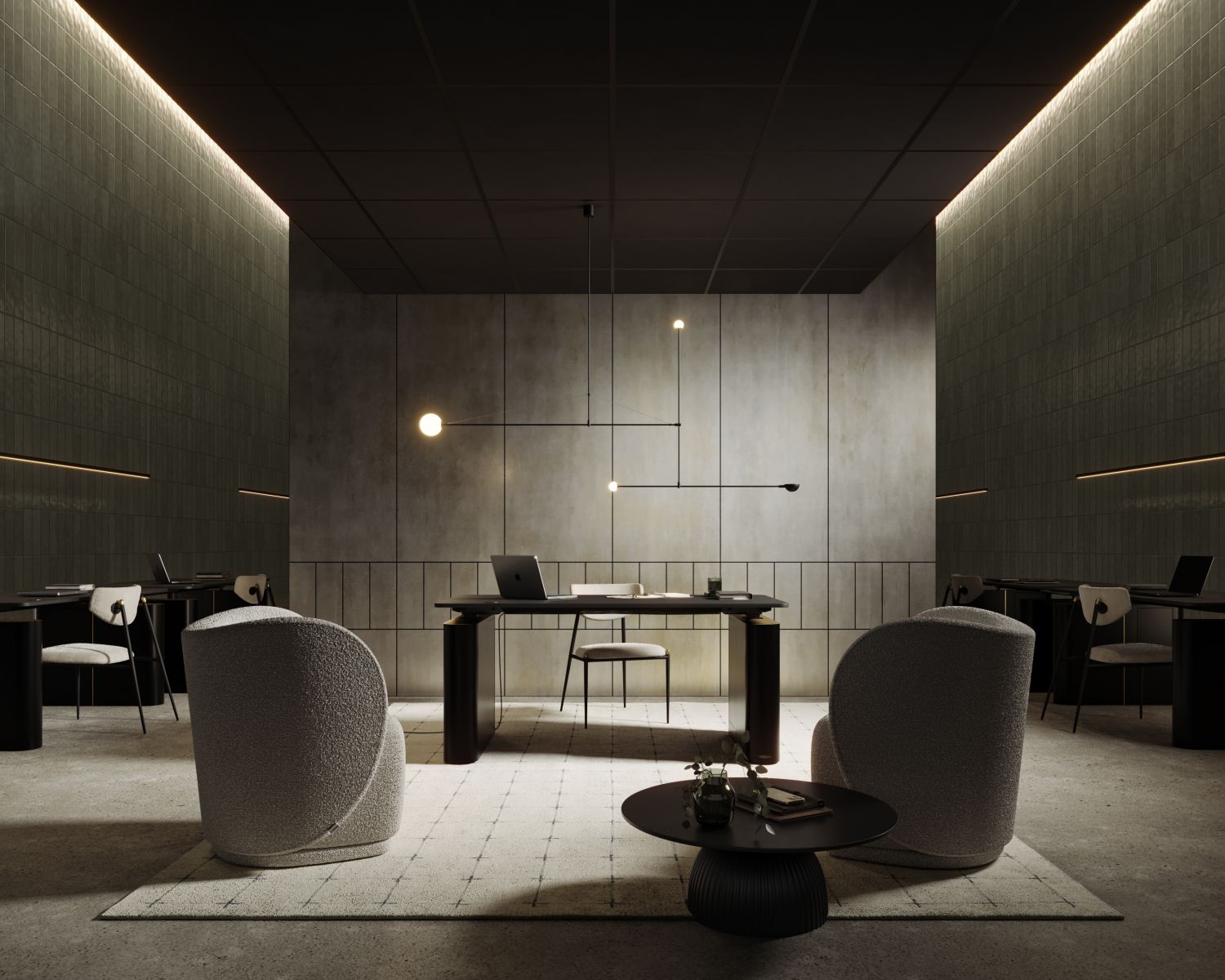In today's fast-paced world, the workspace environment plays a critical role in our productivity and overall well being. Two essential yet often overlooked components of a productive workspace are the desk and counter heights. These two factors significantly influence our comfort, efficiency, and overall work output.
Many of us spend countless hours working at our desks or counters, often without giving a second thought to their height. However, the height of your desk or counter can profoundly affect your posture and your ability to work effectively. In this article, we'll delve into the dynamics of desk height versus counter height and their impact on productivity.
When it comes to ergonomic workspaces, desk and counter heights are not one-size-fits-all. They should be tailored to each individual's height and the nature of their work. Understanding the dynamics of desk and counter height can help you optimize your workspace, boosting both productivity and health.

The Importance of Correct Desk and Counter Height
Correct desk and counter height is more than just a matter of comfort. It's a crucial factor in preventing physical strain and promoting better health. When your desk or counter is at the wrong height, it can lead to a host of physical issues such as back pain, neck strain, and even repetitive strain injuries (RSIs).
Incorrect desk and counter height can cause you to adopt poor posture, slouching or straining to reach your work. Over time, this can lead to musculoskeletal disorders, which can severely impact your ability to work and your overall quality of life. Therefore, it's essential to adjust your desk and counter height to suit your needs and promote good posture.
Furthermore, a properly adjusted desk and counter height can boost your productivity. When you're comfortable at your workspace, you can focus more on your tasks and less on the discomfort or pain you might be feeling. In the long run, this can lead to improved work performance and a more enjoyable work experience.
What is Desk Height and Counter Height?
Before we delve deeper into the dynamics of desk and counter height, it's important to understand what these terms mean. Desk height refers to the distance from the floor to the top surface of your desk, where you typically perform tasks such as writing or using a computer. Standard desk height in offices is usually around 29 to 30 inches, although this may vary depending on individual preferences and needs.
Counter height, on the other hand, refers to the distance from the floor to the top surface of a counter, typically used in kitchens or other work areas. Standard counter height is usually higher than desk height, often around 36 inches, to accommodate standing work or work done on higher stools.
It's important to note that while these are standard measurements, they might not suit everyone. People of different heights and physical abilities may require different desk and counter heights to work comfortably and efficiently.

The Science Behind Desk Height vs Counter Height
There is a science behind desk and counter height, and it's all about ergonomics. Ergonomics is the study of people's efficiency in their working environment. It involves designing or arranging workplaces, products, and systems so that they fit the people who use them, promoting efficiency and well-being.
When it comes to desk height, the goal is to have a height where you can comfortably rest your arms at a 90-degree angle while typing or writing. This reduces strain on your shoulders and back, allowing you to work for longer periods without discomfort or fatigue.
Counter height, on the other hand, is typically higher to accommodate tasks that are done while standing or sitting on a high stool. The goal here is to have a height that allows you to work without hunching over, reducing strain on your back and neck.
The science of desk and counter height is about creating a balance between your physical comfort and your ability to perform tasks efficiently. By understanding this science, you can adjust your workspace to better suit your needs, leading to enhanced productivity.
Relationship between Desk Height, Counter Height, and Productivity
The relationship between desk height, counter height, and productivity is a direct correlation. When your desk and counter are at the correct height, it can significantly improve your work performance. A comfortable work environment allows you to focus more on your tasks, rather than on any physical discomfort you may be experiencing.
A study by the Cornell University Ergonomics Web found that providing employees with well-designed ergonomic furniture resulted in an upsurge in productivity. This is largely due to the fact that when people are comfortable, they tend to be happier and more focused on their work.
Conversely, an uncomfortable workspace can be a significant distraction. If you're constantly adjusting your position or taking breaks to relieve discomfort, your attention is diverted from your work. This can lead to decreased productivity, and over time, potentially serious health issues.
Benefits of Properly Adjusted Desk and Counter Heights
Properly adjusted desk and counter heights can provide numerous benefits. First and foremost, they promote good posture. When your desk and counter are at the right height, it encourages you to sit or stand upright, keeping your spine properly aligned. This can prevent a host of health issues, including back pain, neck strain, and repetitive strain injuries.
Secondly, a comfortable workspace can boost your mood. When you're not distracted by discomfort, it's easier to focus on your work and be more productive. This can lead to a more positive work experience, boosting your job satisfaction and overall mood.
Finally, a well-adjusted workspace can improve your efficiency. When your desk and counter are at the right height, you're less likely to experience fatigue from overexertion. This means you can work for longer periods without needing to take breaks, increasing your overall work output.

How to Determine the Right Desk and Counter Height for You
Determining the right desk and counter height for you involves considering your height, the nature of your work, and your physical comfort. A good rule of thumb for desk height is to sit down at your desk and rest your arms at a 90-degree angle. Your hands should comfortably reach your keyboard without your shoulders having to hunch.
For counter height, consider the tasks you'll be performing. If you're mainly standing, the counter should be at a comfortable height where you can work without bending your back or neck. If you're using a stool, make sure your legs can comfortably fit under the counter with your feet resting on the ground.
Remember, these are just guidelines. What's most important is that your workspace is comfortable for you. Don't hesitate to adjust your desk or counter height as needed to find the best fit for your needs.
Common Mistakes in Adjusting Desk and Counter Height
There are several common mistakes people make when adjusting their desk and counter height. One of them is disregarding one’s own height. What works for a 6-foot-tall person may not work for someone who is 5 feet tall. Make sure to adjust your workspace to suit your own height and needs.
Another common mistake is not considering the nature of your work. If you're doing a lot of typing, your needs will be different from someone who is doing more manual tasks. Make sure your desk or counter height suits the tasks you'll be performing.
Finally, many people don't adjust their chair height when they adjust their desk or counter height. Your chair height should be adjusted so that your feet are flat on the floor and your knees are at a 90-degree angle. This can help maintain good posture and prevent strain on your back and legs.
Solutions for Adjusting Desk and Counter Height for Enhanced Productivity
There are several solutions for adjusting your desk and counter height to enhance productivity. One of them is to invest in adjustable furniture. Desks and counters that can be easily adjusted up or down can be a great solution, allowing you to find the perfect height for your needs.
Another solution is to use ergonomic accessories, such as keyboard trays or monitor stands. These can help bring your work to a more comfortable level, reducing strain on your neck, shoulders, and back.
Finally, don't forget to take regular breaks. Even with a perfectly adjusted workspace, sitting or standing for long periods can still cause strain. Make sure to take short breaks every hour or so to stretch and move around.
Conclusion
The dynamics of desk height versus counter height are crucial in creating a comfortable and productive workspace. By understanding these dynamics and making necessary adjustments, you can improve your comfort, prevent health issues, and boost your productivity. Remember, the best workspace is one that suits your unique needs and promotes your well-being. So, don't hesitate to make adjustments and find the workspace setup that works best for you.
Written by individual contributors and
curated by Rove Concepts Team
